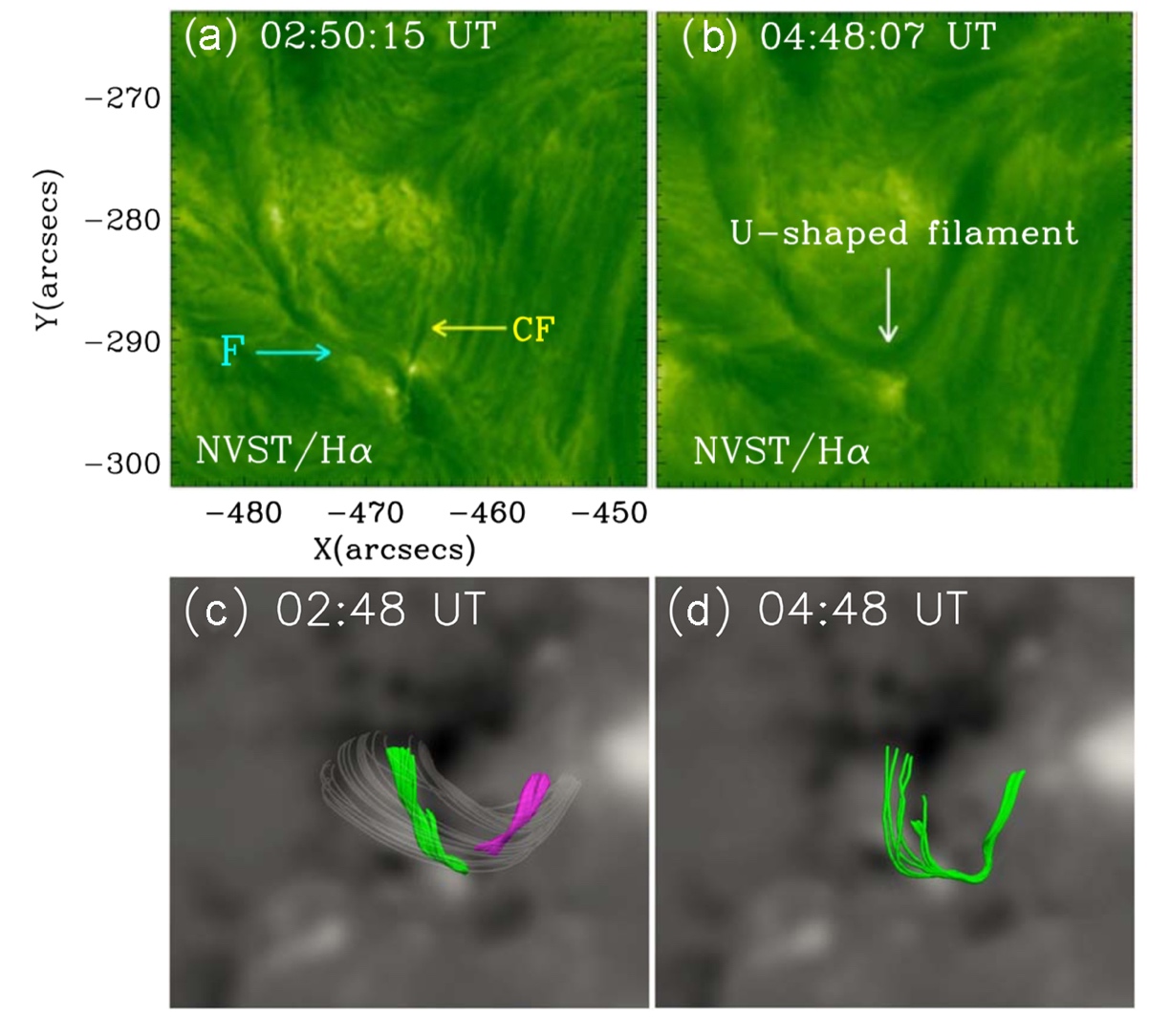Using the high spatial and temporal resolution multiwavelength observational data from the 1-m New Vacuum Solar Telescope (NVST) and the Solar Dynamic Observatory (SDO), Dr. YANG Liping, Professor YAN Xiaoli and their collaborators from the Fuxian Lake Solar Observatory have studied the formation of a U-shaped filament due to the successive magnetic reconnection between a filament and its nearby chromospheric fibrils. The relevant research results were published in The Astrophysical Journal.
The formation of a filament not only involves the formation of filament magnetic structure but also involves the material supply. Many different mechanisms of reconnection associated with the formation of filaments have been studied. Magnetic reconnection can inject the materials into the filament channel or form the twisted magnetic structure, which result in the formation of a new filament. However, the detailed and complete evolution process of reconnection still lacks deep understanding.
The researchers have performed a detailed investigation of the formation process of a U-shaped filament in the active region (AR) NOAA 11598 on 2012 October 25. They found that the successive reconnection occurred between a filament and its nearby chromospheric fibrils. The associated brightening and magnetic cancellation were observed. The changes in appearance of the chromospheric fibrils at the reconnection site were accompanied by the formation and accumulation of some new magnetic loops, as well as plasmas propagated along the formed magnetic loops from the reconnection site, indicating the changes in the topology of the filament and chromospheric fibrils. These can provide comprehensive observational evidence for successive reconnection. After the reconnection, a longer U-shaped filament was formed. During the formation of the U-shaped filament, two major magnetic energy releases took place. While in the two energy release processes, the injected plasma from the reconnection site can provide part of the material for the formation of the U-shaped filament.
The researchers concluded that the successive reconnection results in both the dynamical evolution and the subsequent formation associated with the U-shaped filament. The results of nonlinear force-free field extrapolation demonstrated that the magnetic topology of the filament was changed significantly, which is consistent with the observational results and further confirms the formation of the U-shaped filament as well as the occurrence of successive reconnection between the filament and its nearby chromospheric fibrils.
This work is sponsored by the National Science Foundation of China (NSFC), by the Yunnan Science Foundation for Distinguished Young Scholars and the Yunnan Key Laboratory of Solar Physics and Space Science, and so on.

The upper row (Panels (a) and (b)) are the images of Hα obtained from the NVST. The lower row (Panels (c) and (d)) are the results of the NLFFF extrapolation, showing the changes in the magnetic topology of the filament and its nearby chromospheric fibrils due to successive reconnection. “F” and “CF” are represent the filament and chromospheric fibrils, respectively. The green (purple) lines in the left lower panel (c) represent the filament (chromospheric fibrils) before the formation of the U-shaped filament. The formed U-shaped Filament are pointed by the white arrow in panel (b) and represented by the green lines in panel (d).
Contact:
YAN Xiaoli
Yunnan Observatories, CAS
Email: yanxl@ynao.ac.cn